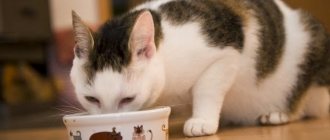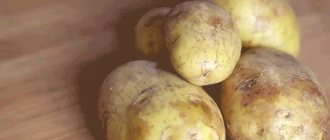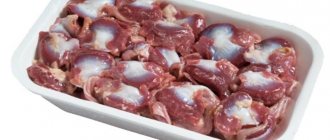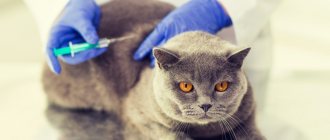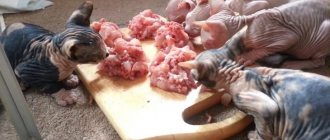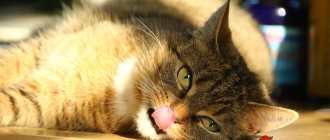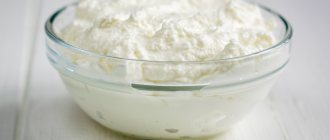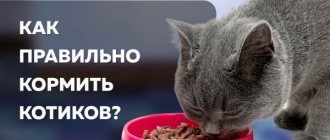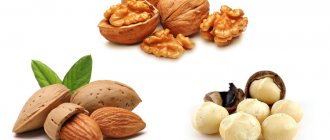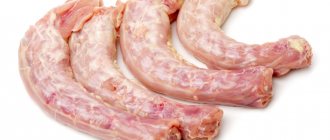Cats and milk have been inseparable concepts since our childhood; in fairy tales, a kitten always laps milk from a saucer.
But in reality, the love between cats and dairy products is not quite what we imagined. This is because while most cats love milk, the milk itself doesn't always reciprocate their love.
The main culprit is milk lactose, which many cats have difficulty digesting. Result: diarrhea or stomach upset. Not exactly romantic.
Do cats and dairy ever get along? Can cats drink milk? Here's what cat nutritionists and veterinarians told Soba4nik.ru.
Reasons for addiction to milk
First of all, milk is a tasty product. The cat understands perfectly well that milk contains a huge dose of protein, which is easily absorbed by the body not only of animals, but also of humans. In addition, milk contains a decent range of essential vitamins, methionine and choline (improves liver function) and calcium, which is an essential element in building strong bones. That is, milk is not only tasty, but also a healthy product.
Now we need to figure out whether it is possible to give milk to a cat?
And why is there an opinion that this product should not be included in a pet’s diet? The fact is that milk contains lactose. It is a sugar that consists of one molecule of glucose and a molecule of galactose. This element is present exclusively in milk. Lactase is a special enzyme that breaks down lactose into its individual components, which are then easily absorbed by the human body.
Lactase is produced in the cells of the mucous membrane of one of the intestinal sections. The amount of lactase in a cat’s body is at its maximum during childhood. However, over time, the concentration of the enzyme decreases due to age-related changes in the animal’s body.
This is a signal to stop milk consumption. The diet of an adult cat is somewhat different from the diet of an infant cat. But just in case, lactase continues to be produced in the pet’s body. But every cat is different. Contrary to popular belief, lactase production does not stop completely after the animal has matured.
In practice, it turns out that some cats drink a lot of milk, while others cannot tolerate it at all. Then their owners immediately perceive it a little differently. It is necessary to correctly assess the reaction of a pet to milk. If a cat has diarrhea, then they consider milk to be harmful. If the cat drinks milk with pleasure, then it will be useful, according to the owners.
Such owners will immediately begin to buy dairy products for their pet, although some of them may not be accepted by the animal’s body. In addition, a cat may love fermented milk products, but due to the characteristics of the body is not able to consume them. Therefore, you should carefully monitor your pet’s vital activity to determine its food preferences.
It should be noted that diarrhea is caused by a deficiency of the lactase enzyme in the animal's body. Lactose, which the body does not digest, binds water, thus causing diarrhea. And intestinal bacteria contribute to the fermentation of sugar, which causes the cat to experience colic and a bloated belly.
It is also possible that with a small dose of milk such problems may not arise. But it is best not to give milk to an animal whose body does not produce lactase in the proper concentration. This makes sense because milk companies have now been able to create lactose-free milk (the animal's body does not need to digest lactose by using lactase).
Such products have long been sold to people suffering from a similar problem.
Many people advise using goat's or sheep's milk instead of cow's milk, since it contains less lactose. The lactose concentration in cow's milk is 4.6%, in goat's milk - 4.5%, and in sheep's milk - 4.8%. Statistics show that you should not listen to the advice of others.
It is worth noting that cats, like people, can be intolerant to the protein found in cow's milk. This is called a milk allergy. In this case, it may be advisable to consume goat’s milk, which does not contain proteins that cause allergies.
More details about fermented milk products
Milk begins to ferment under the influence of lactic acid bacteria, yeast and fungi. Once in the animal’s body, all these components react with pathogenic microorganisms, increasing the level of the body’s defenses and eliminating various types of diseases.
Based on this, fermented milk products should occupy the top line in a pet’s diet. At least not a single cat’s natural diet is devoid of such products as cottage cheese, yogurt and kefir. But how do lactic acid bacteria act on milk so that it immediately becomes beneficial?
The bacterial fermentation procedure itself takes about 24 hours. During this period of time, proteins acquire a finely dispersed structure, which is good for absorption. For example, kefir is absorbed by the body by 91%, while milk by only 32%. Lactic acid gradually accumulates in the serum. It slows down the development of various types of putrefactive bacteria and has a positive effect on the growth of intestinal microflora.
That is why fermented milk products are recommended for people suffering from dysbiosis, which occurs against the background of systematic stress, poor nutrition, and taking medications.
When milk is fermented, the concentration of B vitamins (especially B2) increases sharply, and a mass of beneficial microorganisms accumulates. They create a protective barrier on the surface of the intestinal tract, which protects the cat’s body from the influence of harmful bacteria that can enter from the environment.
General recommendations
The cat’s diet must be selected based on its health status and age characteristics. Food intended for feeding adults and absolutely healthy pets is absolutely not suitable for kittens or animals with any pathologies.
Healthy eating rules
The domestic cat has not lost its natural predatory instincts, which is reflected in the food it consumes.
Under natural conditions, meat proteins enter the cat’s body in raw form, and plant carbohydrate foods enter in a semi-digested form, therefore the nutritional characteristics of a pet require strict adherence to the following rules:
- the diet must necessarily include components of animal and plant origin, represented by meat, cereals and vegetables;
- Poultry and beef will benefit the cat’s body, but the use of pork in the diet should be avoided;
- cereal crops that are harmless to the body of a domestic cat are represented by oatmeal, buckwheat, barley and rice cereals;
- Healthy vegetable crops include non-starchy root vegetables in the form of beets and carrots, as well as white cabbage or cauliflower, cucumbers and zucchini;
- dairy foods should be represented by low-fat and unsweetened fermented milk products, including kefir, fermented baked milk and cottage cheese.
Pre-treatment of food products is not always carried out. Meat and vegetable products are given raw or boiled, and cereals are used for cooking porridge.
Natural nutrition
This option for feeding the “British” can be used by owners who have free time to prepare natural food for their pet. The range of possible food products used in a cat’s diet includes meat, low-fat sea fish, fermented milk products, as well as various cereals and vegetables.
Meat in the form of beef, rabbit or poultry must be fresh. Such meat may contain larvae of parasites or pathogens of various infections, so heat treatment, represented by pre-freezing, is considered the best option. After defrosting, the meat is doused with boiling water. This method allows you to obtain food that is as close as possible in structural characteristics to canned food, but retains all its beneficial properties.
A good alternative to meat would be to include low-fat oceanic fish in the diet of a British cat, such as hake, cod, pollock and saffron cod. The fish must be lightly boiled and thoroughly removed from the bones. Fermented milk products can be seasoned with special bran for pets, which is rich in B vitamins, serves as a source of essential fiber, and has a beneficial effect on the condition of the cat’s coat.
Dry and wet food
Dry food is the cheapest option and is virtually hassle-free for British cat owners. However, many experienced cat owners and specialists do not consider this food to be sufficiently suited to the characteristics of the digestive system of a pet. It is best to use dry food that does not contain carbohydrates of plant origin, and also alternate it with wet meat-and-vegetable food.
Pedigree feed lines
Recently, the so-called pedigree food lines have been especially popular among owners of “British” dogs. For example, BRITISH SHORTHAIR food is produced, which has a balanced composition that is optimally suitable for a British cat.
The Super Premium series uses the highest quality ingredients. The composition can be represented by turkey, lamb or chicken meat, eggs, and high-quality cereals. Such feeds are well digestible, have a higher calorie content, and the components are characterized by high nutritional value.
Kittens up to 2 months old eat milk
Babies, starting from the first day of life, actually feed on milk. But this is cat's milk. It has a special composition that differs from cow or goat. Until about 1 month of age, milk is the only product in a kitten's diet. But somewhere from 3-4 weeks, breeders introduce complementary foods. The best option is feeding raw meat.
However, kittens that have started complementary feeding still eat their mother's milk. It remains the main food for up to 2 months, containing many useful substances. Therefore, if possible, it is recommended to only feed kittens up to 2 months with meat, but not to wean the cat. In extreme cases, raising babies on artificial formula is allowed.
At 2 months, small kittens almost completely switch to adult food and essentially do not need mother’s milk, although they can still come to the breast if they remain living with their mother.
Choosing a place and dishes
After purchasing a kitten, it is recommended to arrange a feeding area. This is an important moment for cats. The choice of place and utensils is carried out taking into account the characteristics of the animal. For example, the British eat small portions.
Recommendations for the place:
- Cats prefer to snack in a quiet environment, so it is better to arrange a place away from washing machines and TV.
- The feeding area is kept clean, so it is recommended to place easy-to-clean material under the bowls.
- There must be constant free access to food.
- Bowls should not be placed in the aisle, as cats do not like it when someone walks nearby while snacking. A convenient location will help to avoid constant tripping over dishes by the owner himself.
- If you set up a feeding area for a kitten on a small hill, then it will jump up to it. This will increase physical activity, which is beneficial for Britons due to their tendency to be obese.
- If there are several pets in the house, the feeding area is arranged separately for each animal.
Feeding utensils are a special thing. The container that comes to hand first is not suitable for this purpose. From the first months of life, British cats require 2 bowls: for drinking and for feeding.
Milk for adult cats
Up to 3 months, the kitten can still latch on to its mother's breast or drink cow's or goat's milk or cream, which the breeder treats it to. And, as a rule, no problems arise from a small amount until the animal is 3 months old. Plus or minus, from this age, cats cease to produce in sufficient quantities the enzyme lactase, which is necessary for the breakdown of lactose - milk sugar. Therefore, milk is not recommended for cats older than 3 months.
But still, not everyone develops lactose intolerance immediately. Some cats, having reached the age of 3 months, are absolutely lactose intolerant. They get gas and diarrhea every time they try this treat. Such cats, what is most interesting, can continue to love milk. And there is a pattern: the less often an animal receives milk, the worse it tolerates it.
Other cats may consume milk in limited quantities throughout their lives. Usually this is 40 grams of milk per 1 kg of cat weight. If you exceed the norm, problems may begin: gas, pain, diarrhea. We recommend, however, that if possible, milk should not be given to anyone in any quantity. The fact is that owners often do not notice that their cat suffers from unpleasant sensations after drinking milk, because they do not necessarily manifest themselves in the form of diarrhea.
It is better to replace milk with fermented milk products that your pet likes. These are kefir, cottage cheese, sugar-free yogurt, fermented baked milk and even sour cream. But sour cream is a fairly fatty product, so you shouldn’t give it a lot. It is also acceptable to treat you to a small piece of high-quality cheese (not a cheese product, but cheese!). Alternatively, you can offer your cat lactose-free dairy products, including lactose-free milk.
Source
Can British kittens be given dairy products?
The main role in feeding kittens up to 1 month is performed by the cat; complementary feeding begins at 3–4 weeks. It is better to use ceramic and glass dishes for food and water. Plates should be kept clean, water (purified, filtered or boiled) and fresh (changed a couple of times a day), food should be at room temperature.
What to feed correctly: food or natural food at home, depends on the type of feeding the kittens chosen by the breeder: natural, dry food or a mixed type of food.
What to feed the baby if the cat does not feed him?
Kittens can be given cow's or goat's milk, but only if absolutely necessary or in an emergency. What should you feed your baby on a regular basis if maternal feeding is not possible? There are very strict requirements for the kitten's menu. Food should be nutritious and high in calories so that the baby grows quickly and gains weight. Food should be given only in soft form - solid foods are contraindicated for baby cat food.
Review of finished products
Ready-made formulas for feeding kittens in the form of dry powder are sold in pet stores. In the absence of natural feeding, this is the best option for healthy and nutritious nutrition of the animal. Mixtures from different manufacturers may differ in composition. It is necessary that the product contains the necessary minerals, macro- and microelements - calcium, zinc, iron, iodine, valuable omega-3 and omega-6 fatty acids, vitamins B, C and E.
When choosing a mixture, you should take into account the age, size and breed of the kitten. Large Maine Coons and Kurilian Bobtails require more calories per serving than miniature babies.
Which manufacturer should you prefer? Everything is individual; the same product may be ideal for one pet and completely unsuitable for another. For a newborn kitten, you can purchase the Beaphar Kitty-Milk mixture produced in the Netherlands. The product is safe for the baby's health and contains the optimal amount of calories, nutrients, vitamins and minerals. For weakened and underweight babies, German Cat-Milk powdered milk with a high taurine content is more suitable.
If we consider the budget segment, the American “Milk for Kittens” mixture has a good composition. It contains calcium for strong bones, taurine for heart and eye development, lysine for respiratory health, and linoleic acid to support kitty's healthy skin and coat.
The cat's milk replacer from Royal Canin will appeal to your baby, as the smell is very reminiscent of mother's milk. This mixture, in addition to proteins and vitamins, contains fish oil, natural oils and fructo-oligosaccharides, which promote the proper physical development of the pet and strengthen its immunity.
Homemade Blend Recipes
It is not necessary to purchase ready-made mixtures in the store; healthy and tasty food for your kitten can be prepared at home. In the absence of allergies or intolerance to pasteurized cow's milk, the mixture can be made based on it. To do this you will need the following ingredients:
- 1 glass of milk, heated to 40–45°C;
- 2 yolks;
- 1 tsp. sunflower or other vegetable oil;
- multivitamin complex in drops.
You can use human breast milk substitutes, such as Nutrilon. Instructions for preparing 1 serving are indicated on the package. This option is not suitable for regular feeding of a kitten, but it can help out once in an emergency situation in the absence of cat milk formula.
For newborn kittens, you can prepare the mixture according to the following recipe:
- take condensed milk (20%) without added sugar;
- add bone meal at the rate of 1 tbsp. l. per 1 liter of liquid;
- mix the ingredients.
The baby should be fed using a syringe, pipette or a special bottle with a nipple for small animals, very carefully. Before feeding, the mixture must be warmed to 40°C. It is not recommended to store the finished product; this should be taken into account when preparing a portion. You cannot overfeed a kitten with ready-made or homemade formula - this can lead to intestinal upset and stool problems.
Natural feeding of the British
The presented list of products in the table is in addition to cat milk; kittens feed on cat milk for up to 2 - 3 months.
| Age | How and what natural foods can you feed a British kitten? | Number of feedings per week |
| 1, 2, 3, 4 months | minced beef, then finely chopped beef, cut into strips 0.5 - 1 cm thick, 3 - 5 cm long, freeze for 24 hours. | daily |
| quail eggs (can be beaten with cream), egg yolk | 2 – 3 | |
| dairy products (kefir, sour cream, cottage cheese without additives, cream, all with medium fat content) | 2 – 3 | |
| boiled chicken, turkey, rabbit are mixed with boiled porridges (buckwheat, oatmeal, rice, wheat), vegetables (carrots, zucchini, pumpkin, cabbage), proportions 2:1 with the addition of vegetable oil | 1 – 2 | |
| special sprouted grass | daily | |
| vitamins 8 in 1, Beaphar | daily | |
| from 5 – 6 months | We feed in the same way as up to 4 months, increasing the serving rate. Do not give milk (may not be digested). |
What not to feed a kitten:
- duck, pork, any bones, goose, lamb;
- potatoes, legumes;
- dried, salted, fried, smoked, spices, spicy, sweet;
- River fish;
- egg white;
- onion garlic;
- street grass.
Prohibited Products
Most foods that people eat are not suitable for cats. The British should not be fed any salty, sweet, fried, fatty, smoked, or spicy foods. The cat's body is not adapted to digest such food, and the liver cannot cope with large amounts of toxic substances.
Also, the food of British cats should not include the following foods:
- River fish;
- tubular bones;
- sausages;
- semi-finished products, canned food and fast food;
- mayonnaise, ketchup and other sauces;
- chocolate, cocoa;
- eggplants, potatoes, legumes;
- mushrooms;
- citrus fruits, grapes, raisins;
- rhubarb, sorrel, onion, garlic;
- foods and drinks that contain alcohol, caffeine and other stimulants.
A British cat should not be fed food from the human table, even if it plaintively begs for a tidbit. Such handouts will result in serious health problems.
Dry and wet food, canned food
It is important to choose the best food Premium, Superpremium, Holistic. The best foods are Orijen, Acana, Optima Nova.
| Age | What food is best to feed a British kitten? | Number of feedings per week |
| 3 – 5 weeks | canned food, wet food for kittens | daily |
| cat milk, special milk | daily up to 3 months | |
| from 5 – 12 months | canned food, spiders for kittens | 3 – 4 |
| dry food for kittens (can be soaked a little if the instructions allow it) | every day | |
| special sprouted grass | daily | |
| vitamins 8 in 1, Beaphar | course | |
| dry food for adults or sterilized | daily | |
| after 12 months | canned food, wet food (pouches) for adults or sterilized | 3 – 4 |
| special sprouted grass | daily | |
| vitamins for cats 8 in 1, Beaphar | course |
Dry, wet food and canned food must be the same brand! Canned food is transferred from metal containers to glass containers with a lid; they are stored in the refrigerator for no more than 24 hours!
It is better to buy drying in packages of no more than 5 kg. You need to get a special glass or ceramic jar (half - 1 liter) with a tight-fitting lid. Pour food into it (squeeze the air out of the bag before closing). Store the jar in a dry, dark place.
What food should you not feed your kitten:
- cheap “Kitekat”, “Friskies”, “Whiskas” and from the same series will lead to illness and quick death of your pet,
- drying by weight (in most pet stores, bags of food are kept in an open form, as a result it erodes, its beneficial properties disappear, taste and color change, fats become “washed out” in the air, carcinogenic substances appear in the food. It is impossible to track when the bag is opened, what is the expiration date and is there another one mixed in).
Store-bought feed
Only high-quality premium and holistic industrial feeds are suitable for constant nutrition. Giving an animal economy-class food is highly discouraged, since it is not of high quality and the composition is unbalanced. In the future, if such food is regularly consumed, serious health problems may arise.
When choosing ready-made food, you can consult a veterinarian, or study the assortment in pet stores and choose food designed for the British breed. If a kitten purchased from a nursery has already been accustomed to dry food and eats only this way, you should feed the baby the same brand that the breeder used.
Recommended industrial feeds for the British breed
On mobile, you can scroll the table horizontally with your finger.
| Food name/class | Features and Benefits | Flaws |
| Royal Canin British Shorthair (premium) | A special food developed only for the British breed. The food granules have a large, curved shape, which is why the animal cannot swallow it whole, and the granules themselves promote active cleansing of the teeth and oral cavity. The composition contains taurine, Omega-3 acids, which strengthen the heart and circulatory system. | Natural meat and fish are replaced with proteins of plant origin. |
| Go! Natural Cat Chicken, Fruit, & Vegetable (holistic) | Protein – 32%. Components:
The composition contains taurine, which strengthens and supports the functioning of the heart. Suitable for feeding kittens and British adults. | Some components of the food are allergic and can cause allergies. |
| Hill's Nature's Best With Real Chicken Adult Cat (Premium) | Protein – 30%. Components:
The composition contains many vitamins and mineral elements. The food is intended for British children from 12 months, taking into account all their physiological characteristics. | The presence of corn in the composition can provoke an allergic reaction. |
| Earthborn Holistic, Primitive Feline Natural Cat Food (holistics) | Protein – 44%. Components:
Balanced composition, including calcium, vitamins, phosphorus. Suitable for animals that must follow a diet. | High price. |
| Bosch Sanabelle Grande (super premium) | Proteins – 31%. Components:
Mussels help strengthen joint and cartilage tissue. The food contains Yucca extract, which reduces the odor of cat excrement. Helps prevent the formation of kidney stones. | Quite a high cost. Lack of information from the manufacturer regarding the type of antioxidant included in the feed. |
Mixed feeding
- Drying + natural. With this type of feeding, the cat is always dry. A supplement to it is natural complementary feeding (1-2 times/day) + vitamins.
This type of feeding is contraindicated by veterinarians because it often leads to urolithiasis (UKD), hyperthyroidism, gastrointestinal problems, etc.
- Drying + canned food or wet food. With this type of feeding, drying is mixed with complete canned food.
This type of feeding is recommended by veterinarians because... the food is balanced and fermented for better absorption, tasty for the pet and will help replenish the lack of water in the body if the cat drinks little.
The importance of water in the British diet
For British cats, and even more so kittens, water is an important substance necessary for the normal functioning, growth and development of the body. It is required in moderation. If wet food was chosen for feeding, then less water will be needed.
Main conditions:
- constant access to a bowl of water;
- keeping it clean;
- change the liquid every day or more often if pieces of food or other objects get into the container;
- placing a bowl of water separately from the container with food.
Ordinary tap water is suitable for drinking, as long as it has no foreign odor or taste . It happens that a cat refuses to drink tap water, then filtered or purchased drinking water is taken.
Dry food or natural food, what to choose
Natural food is as close as possible to the cat’s natural diet, you know what you are feeding, it’s appetizing for your pet, it contains a sufficient amount of moisture, and it provides the proper load on the teeth. It is very difficult to properly balance the diet, the need for vitamins, and a lot of time spent on preparation.
When feeding dry food, the diet is balanced, the time required is minimal, and does not require daily vitamins. Good dry food is expensive, has low moisture content, is light on the teeth, and may not be appetizing in appearance.
When feeding canned food and wet food, the diet is balanced, the time required is minimal, does not require daily vitamins, contains a sufficient amount of moisture, and is appetizing to the animal. Canned food and wet food are very expensive and put little strain on the teeth.
Algorithm for switching to a different diet
A British cat cannot be suddenly switched from dry food to natural food, and vice versa. Sudden changes in diet disrupt the functioning of the digestive system.
New food is introduced gradually over 10-14 days. First, 25-30% of the usual food is replaced, and the rest of the food is left the same.
After 2-3 days, the proportion of unfamiliar food is increased by another 10-15%. This is done until the British cat completely switches to the new diet.
During the process, the condition of the animal is closely monitored. If allergies, indigestion or other negative reactions appear, return to the usual menu. In such situations, the cat is taken to the veterinarian so that a specialist can help choose the appropriate diet.
Often British people refuse to eat natural food after ready-made food. In this case, you can give your cat a fasting day. Most likely, when she gets hungry, she will eat whatever her owner offers.
How many times a day to feed
An adult cat is fed 3 - 4 times a day, we monitor the weight gain of a pregnant cat (we reduce the amount of food 1 - 1.5 weeks before giving birth).
A British cat should gain 1000 - 1500 grams during pregnancy; more is dangerous, because... the kittens will be large, which will lead to a difficult birth. The nursing mother should not be limited in food, she will eat as much as she needs, the norm should be introduced when the cat stops feeding.
- 3 – 4 weeks (monthly) – 1 time/day;
- 1 – 2 months – 2 times/day;
- 2 – 3 months – 3 times/day;
- 3 – 12 months – main feeding 3 – 4 times a day.
The norm in grams for dry food is indicated on the packaging depending on the weight and age of the pet.
The diet of a sterilized British cat or neutered cat is the same as that of a regular cat. Such animals are more likely to be overweight. If a cat (no matter what breed: British or Scottish Fold or Straight) has gained excess weight, it should be gradually transferred to a special food for sterilized ones.
Features of a natural diet
The daily calorie content of food should be about 300 kcal
It is important not to overfeed the British cat, otherwise there is a risk of obesity, and against its background – diabetes mellitus. The basis of nutrition is protein, but it must be of animal origin
The serving size per day ranges from 125 to 300 g, depending on the size of the animal and the degree of its physical activity. Meat products should account for up to 80% of the food volume, the remaining 20% is allocated to side dishes - cereals, vegetables and fruits.
Authorized Products
To maintain the beauty and health of a Briton, the following products should be present in the daily diet:
- Meat – preference should be given to beef, which must be kept in the freezer for 3 days. Chicken and turkey are also allowed. You should avoid fatty varieties, such as pork.
- Fish – sea fish is allowed, low-fat, only boiled. Seafood is allowed to be consumed occasionally. British cats are big fans of shrimp, but they can be given infrequently, only as a rare treat.
- Dairy and fermented milk products - sour cream, kefir, fermented baked milk, hard and unsalted cheese, cottage cheese are allowed.
- Legumes - can be given very rarely and in limited quantities, only as an addition to the main dish.
- Cereals – any, cooked in water, without adding salt.
- Vegetables - almost any, with the exception of potatoes. They are served to the animal fresh and boiled, or can be stewed. Vegetables are chopped and combined with meat.
- Fruits – almost any kind, except citrus fruits. They will be especially useful for cats expecting a litter.
In addition, it is important to ensure that your pet follows the drinking regime. Not drinking enough fluid can lead to the formation of kidney stones
The water should be clean, changed daily, and always present in the bowl.
To maintain the smooth functioning of the digestive system and prevent the occurrence of any abnormalities, it is recommended to regularly add vegetable oil to food. The amount of oil for an adult is ½ teaspoon, for a small Briton – 2-3 drops.
Prohibited Products
To prevent serious and dangerous diseases of the digestive system in British cats, their diet should not contain the following products:
- coffee, tea, alcohol;
- sweets and confectionery;
- canned meat and fish products;
- smoked meats;
- purchased sausages;
- peas.
It is also prohibited to treat your pet with food from the common table. It is recommended to prepare only a separate menu. The British are distinguished by the fact that they can show an unhealthy interest in such “human” products as coffee with milk, chocolate, pickles, and some individuals really like baked goods.
They will eat all these products with great pleasure and are ready to go to any lengths to beg for forbidden delicacies. It is strictly forbidden to follow the lead of your four-legged comrades, since a few pieces of chocolate, marinades or pickles can cause irreparable harm to the cat’s body.
Natural food for kittens
Food from natural products is selected according to the age of the kitten. As you grow older, the frequency of food consumption gradually decreases:
- The number of feedings for a kitten up to 12 weeks is from 5 to 6 times a day.
- A little Briton from 12 weeks to six months needs to be fed 4 to 5 times.
- From six months onwards, the frequency of meals is three times.
- A kitten that is 8 months old should receive food, like an adult, no more than 2 times a day. There should be no night feedings.
The diet of small kittens up to 4 months includes milk and light, low-fat fermented milk products. Milk is contraindicated for an adult cat.
From the age of 5 months, lean, lean meat is gradually introduced into the daily menu of a little Briton. Preferred varieties are beef, chicken and turkey, and rabbit. Before serving, the meat must lie in the freezer (cut into pieces) for 4-5 hours.
The kitten should be given meat mixed with chicken yolk, both raw and boiled, with boiled vegetables. From 5 months you can introduce beef and chicken by-products into the diet, but not more than once a week.
The baby's menu must include porridge boiled in water, without salt. At 4-5 months, porridge should be very thin; as the British baby gets older, it can be made thicker. Among vegetables, preference is given to cauliflower and beets.
A kitten is allowed only certain types of fish: trout, salmon, herring. Fish products may be present on the menu no more than once a week and in very limited quantities. Hake, pollock, roach, crucian carp - these types of fish should not be in the diet.
